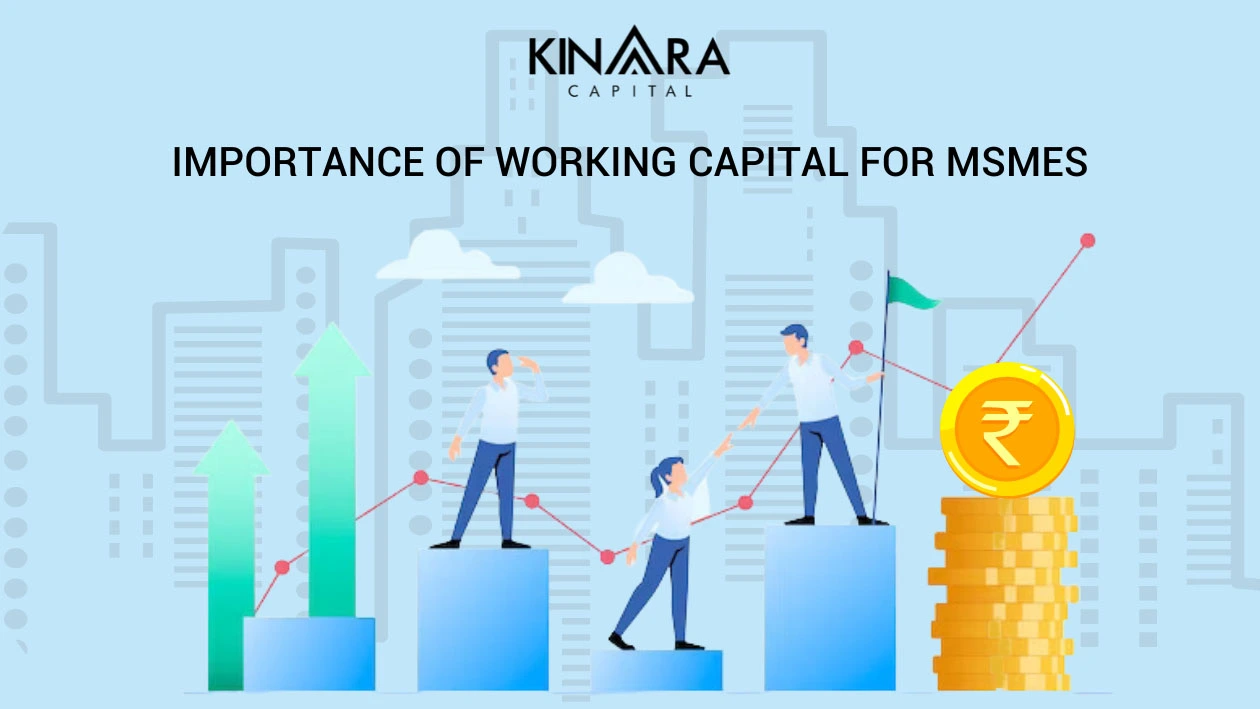
The ability to meet short-term obligations is essential for a business’s long-term survival. Working capital ensures that a business has enough funds to cover its daily expenses and stay afloat even during difficult times. It also allows business owners to finance their growth without incurring debt. While the concept is simple, managing working capital can be complex. This article will address some of the key questions about working capital and why it is so important for small businesses.
Working capital is the cash and other liquid assets that a business uses to operate on a day-to-day basis. It is important for businesses to have enough working capital to cover their expenses, such as accounts payable, inventory, and wages. Working capital loans can help businesses to meet their short-term financial needs, such as purchasing inventory, expanding into new markets, or hiring new employees.
Working capital is essential for smooth operation of a business, covering daily expenses like accounts payable, inventory purchases, and wages. Adequate working capital ensures that businesses can meet short-term financial needs, such as expanding into new markets or hiring employees. Working capital loans can be a vital resource for purchasing inventory and maintaining business growth, offering liquidity when needed most.
Working capital loans can be a valuable source of funding for businesses, but it is important to use them wisely. Businesses should only borrow as much as they need and should make sure that they can repay the loan on time.
Working capital loans can be used to purchase inventory, which is essential for businesses to keep their operations running smoothly.
Working capital loans can also be used to renovate business premises, such as adding a new signboard or upgrading the interior.
Working capital loans can be used to pay worker salaries, especially during seasonal or peak periods when businesses need to hire more employees.
Working capital loans can be used to repair machinery, which is essential for businesses to maintain their production capacity.
Working capital loans can be used to purchase new technology, such as point-of-sale (POS) machines or computer systems.
Working capital loans can be used to pay rent for storage facilities, which is important for businesses that need to store inventory.
Working capital loans can be used to add new product lines, which can help businesses to expand their market share.
Working capital loans can be used to expand into new markets, which can help businesses to grow their sales.
The advantages of working capital are crucial for maintaining the financial health and operational efficiency of a business. Adequate working capital ensures that a business can meet its short-term obligations, such as paying suppliers, purchasing inventory, and covering payroll. This liquidity helps businesses avoid disruptions in their operations, leading to smoother day-to-day functioning.
One of the key advantages of working capital is its role in enhancing a company’s ability to take advantage of growth opportunities. With sufficient working capital, a business can invest in new projects, expand into new markets, or purchase inventory in bulk, all of which can lead to increased profitability.
Working capital financing is a vital tool for businesses that need to maintain or boost their working capital. It provides the necessary funds to manage day-to-day operations without compromising other financial commitments. This financing can come in various forms, including short-term loans, lines of credit, or trade credit.
There are different types of working capital finance, each catering to specific needs. These include cash credit, overdraft facilities, and invoice financing, among others. By choosing the appropriate type of working capital finance, businesses can ensure they have the liquidity needed to sustain operations and support growth.
Working capital is the lifeblood of Micro, Small, and Medium Enterprises (MSMEs), playing a pivotal role in sustaining and expanding their operations. Adequate working capital ensures that MSMEs can smoothly manage their day-to-day expenses, such as purchasing raw materials, paying salaries, and covering utility bills. This financial stability allows businesses to maintain optimal production levels and meet customer demands promptly, thereby enhancing their reputation and competitiveness in the market.
Working capital financing becomes essential when MSMEs face gaps between their operational expenses and revenue inflows. Access to sufficient financing helps these enterprises manage cash flow fluctuations, especially during periods of high demand or unforeseen expenses. By securing appropriate working capital financing, MSMEs can seize growth opportunities, negotiate better terms with suppliers through bulk purchasing, and invest in marketing and expansion initiatives without disrupting their operational efficiency.
There are various types of working capital finance available to MSMEs, each tailored to meet specific financial needs. Some common options include:
Understanding and effectively managing working capital is crucial for the sustainability and growth of MSMEs. By using appropriate working capital financing options enables these enterprises to maintain liquidity, enhance operational efficiency, and build resilience against financial uncertainties, ultimately contributing to their long-term success and profitability.
Working capital is the liquid funds that businesses use to manage their daily operations and expenses. It is important for businesses to have enough working capital to cover their short-term financial obligations, such as accounts payable, inventory, and wages. Working capital loans can help businesses to meet their short-term financial needs, such as purchasing inventory, expanding into new markets, or hiring new employees.
MSMEs can use working capital loans to finance a variety of business activities, including stock or raw material purchase, business premises renovation, worker salaries, machine repair, technology for business, storage or godown rent, adding new product lines, and market expansion into new geographies. Working capital loans can be a valuable source of funding for businesses, but it is important to use them wisely. Businesses should only borrow as much as they need and should make sure that they can repay the loan on time.
Kinara Capital offers both long-term and short-term (only for existing Kinara customers) collateral-free working capital loans to small business owners in the manufacturing, trading and services sectors. Some of the top features of business loans from Kinara Capital include:
Check eligibility for collateral-free working capital loans in these 3 easy steps now!
Step 1 – Fast eligibility check in 1 minute, no upload required
Step 2 – Secure KYC & income verification through fully digital process
Step 3 – Quick loan disbursement within 24 hours
It is important for small businesses to manage their working capital effectively in order to ensure that they have enough cash on hand to meet their short-term obligations.
If managed right, working capital can facilitate business growth, even out revenue fluctuations, and optimise capital performance. This can help businesses avoid cash flow problems, operate more efficiently, and make better financial decisions.
Kinara Capital offers collateral-free working capital loans for small businesses to help them seize every growth opportunity. Registered MSME owners can evaluate their eligibility for a loan in just 1-minute by starting the digital-first application process on the Kinara Capital website or by downloading myKinara App. Eligible MSME entrepreneurs can submit the necessary documents and the loan amount will be disbursed digitally to their bank account within 24-hours.
Also, we have a dedicated customer support team available between Monday – Friday (9.30 AM – 6.00 PM) at our toll free number 1800-103-2683 for any questions or assistance. This ensures that entrepreneurs can get the help they need throughout the loan process.
Insufficient working capital can cripple MSMEs by hindering daily operations, leading to delayed payments, inability to purchase inventory, and missed growth opportunities, ultimately risking business survival.
MSMEs can improve their working capital management by optimising inventory levels, speeding up accounts receivable collections, negotiating better credit terms with suppliers, and leveraging appropriate working capital financing options to maintain liquidity.
Working capital plays a crucial role in MSMEs’ growth and expansion by ensuring sufficient liquidity to manage day-to-day operations, invest in new opportunities, purchase inventory, and support business scaling, thereby driving sustained development and market competitiveness
MSMEs calculate working capital requirements by subtracting current liabilities from current assets. Consider cash flow, inventory, receivables, and payables to determine the amount needed for daily operations.
During economic downturns, MSMEs can manage working capital by optimising inventory, improving receivables collection, negotiating better payment terms with suppliers, cutting unnecessary expenses, and focusing on cash flow forecasting to maintain financial stability.
Maintaining a healthy working capital cycle for MSMEs ensures liquidity, reduces borrowing costs, improves cash flow, enhances operational efficiency, and supports growth opportunities, fostering overall business stability and resilience.
MSMEs can ensure adequate working capital by regularly forecasting cash flow, monitoring financial ratios, optimising inventory, managing receivables and payables efficiently, and securing flexible financing options for unforeseen needs.
